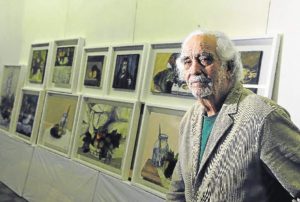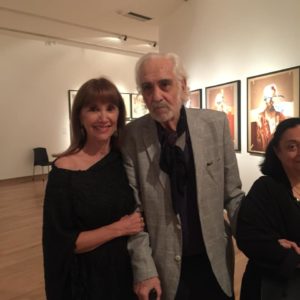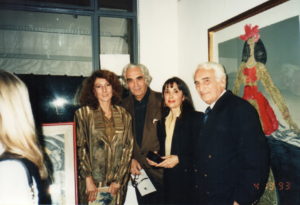Artistas
BIOGRAFÍA
He was born in Tunuyán, where he lived until age seven. He then moved with his family to the city of Mendoza, and at fourteen he entered the Academia Nacional de Bellas Artes in this city. There he studied with teachers like Sergio Sergi in grabado drawing, Lorenzo Dominguez y Francisco Bernareggi sculpture and painting Ramón Gómez Cornet . He shared his studies at the academy with other prominent painters of Mendoza , Enrique Pardo Sobisch and Orlando . He received his first award in the Salón de Estudiantes 1947, and in 1953 exhibited at the Viau Gallery of Buenos Aires, which provided the necessary funds for, a year later, traveling to Europa, where he exhibited in Paris and Madrid. During his visit to London in 1961, he discovered the acrylic, a technique later adopted immediately in paint, fast drying, allowing great results.
In 1951 he won first prize at the Exhibition of Painting of San Rafael (Mendoza), the Salón del Norte (Santiago del Estero) and the drawing award in the Salón del Norte (Tucumán). In 1957 he won the competition organized by the publisher Emecé to illustrate the second part of El Quijote de la Mancha and Martin Fierro (1959), and two years later won the Prix Chantal of Hall of watercolors and Recorders of Buenos Aires. In 1963 some postcards were published in the Soviet Union with images of «El Quijote». For illustrations chosen Gustave Doré, Honoré Daumier, Picasso and Carlos Alonso. He made many exhibitions alone and in group with other artists such as Antonio Berni, Pedroni, Cerrito, Giovanni Bressanini, Monaco, Luis Videla, Robirosa, Horst, etc.
In 1990 he was commissioned to paint the center panels in the dome of Teatro del Libertador General San Martin in the important city of Córdoba Argentina.
In 2005 , in the 400 anniversary of Cervantes’s work, El Museo del Dibujo y la Ilustración made a show tribute at the Eduardo Sívori Museum of the City of Buenos Aires, where were exposed original prints and drawings by Carlos Alonso to illustrate the most significant work of speaking..
He has illustrated, among other literary works, Romance Criollo, Antología de Juan, La divina Comedia, El Juguete Rabioso, Irene, Lección de Anatomía and Mano a Mano.
His works have been exhibited in numerous exhibitions, among others, at the Art Gallery International (Buenos Aires), where, in 1967, presented about 250 works referred to Dante and the Divine Comedy; the Museo Nacional de Bellas Artes (México), and the Museo de Arte in Havana (Cuba), where he did a presentation of tapestries and collages. In 1971 he exhibited in Italian galleries like Giulia at Rome and Eidos at Milan, and in the Bedford Gallery of London too.
After the coup of 1976 where his daughter Paloma was disappear, Alonso was exiled to Italy, and in 1979 moved to Madrid.
Two years later he returned to Argentina , and from that moment realized numerous exhibitions : the Palatine Gallery in Buenos Aires , between 1982 and 1996 ; at the National Museum of Fine Arts, from 1990 to 1995 , and in other many Argentine galleries, like Zurbarán or the BarilocheAlthough Alonso painting is not easily understood, its wealth lies in the continuous paradoxes posed between subjectivity and rationality , between chaos and order, between pleasure and discipline. In the work of Alonso are also present, the wounds inflicted by the military dictatorship , opting for political engagement, without neglecting the eroticism that is perceived in another part of their artistic production. Alonso has twice received the Konex Platinum Award (1982 and 1992 ) as the best artist of the decade in Argentina and in 2012 received the Konex Special Mention Lifetime Achievement Award for Visual Arts for his work throughout his life.
IMPRIMR BIOGRAFÍA Regresar


























































